Roasting Dandelion Roots with Dr. Nate Petley

With the coloring of the trees and the cooling of the temperatures in a typical Maine October, one often thinks of pumpkins. However, once that frost starts occurring more regularly, I think of a hot mug of roasted dandelion roots. Roasting brings out the earthiness of the roots. It is rich in texture and in flavor and pairs well a warm blanket and a good book. I find it a beverage of choice for after dinner when I want something rich like coffee but without the caffeine.
Do not collect or use dandelions that come from fields or yards that have been sprayed with chemicals. If harvesting these for the first time, please find a knowledgeable herbalist who can correctly identify them (in case you have any questions).
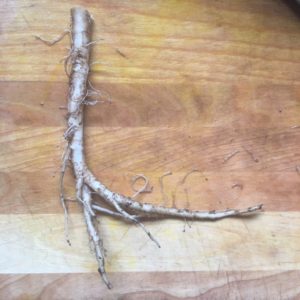
These roots were harvested from the garden where I let them grow freely throughout the summer. They don’t take up much space and in fact help choke out other more invasive weeds. Plus, these ‘weeds’ are highly edible and not a weed to me but nutritious food. Recall the simple definition of a weed: a plant growing where we don’t want it. To learn how I harvested these, click here. They have already been thoroughly cleaned from soil, stones, foreign plant material, etc.
On a cutting board, cut up the roots that are larger than say a pencil. Larger pieces take a little longer to roast than the smaller roots, which I leave whole.
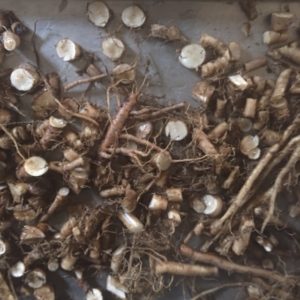
Lay them on a cookie sheet in a single layer. Unlike other roasted vegetables, do not add olive oil, salt, or garlic (although, come to think of it, that combination would make a great base for a root soup with turnips, onions, potatoes, kale… but I digress).
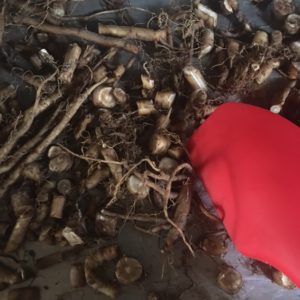
Place the cookie sheet in the oven set at 250°F. The time the roots take to roast depends on the oven temperature, the size of the roots, and the preference of how roasted one prefers their roots. Lower oven temperatures are ideal but it takes longer to roast. I don’t get too fancy when cutting the roots except to make each batch relatively uniform in root size. Larger pieces take longer to roast. Some will throw the chopped roots into a food processor to create a finer texture (remember, you are not looking for powder). When I made this batch, I forgot they were in the oven and I thought I burned them. A few got a more crisp than I had planned. However, the more you roast them, them more ‘coffee’ like the brew makes. So bottom line is to plan on about two hours of roasting, give or take an hour. Stir the roots every 15 minutes or so to ensure uniform drying and roasting. Some will keep the door ajar to allow the moisture to escape but I don’t make large enough batches at one time to make much difference. I would if I roasted several pans at once.
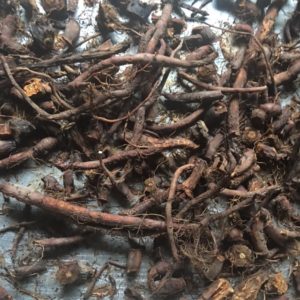
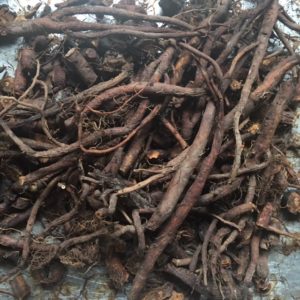
It’s difficult to note differences in these pictures, but as the roots roast, the get duller and more uniform in color. The smaller roots will snap when bent. As the roasting nears the end, I will stir more frequently.
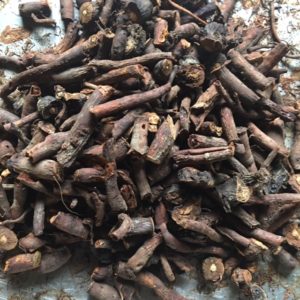
Once roasted, larger pieces will crumble into smaller pieces like these.
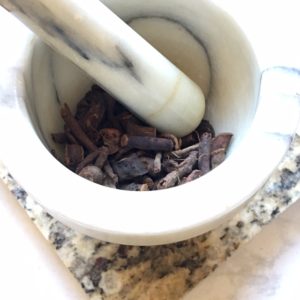
The next task is to grind the roots. Some days I like the slower process of making herbal medicine and I’ll use a mortar and pestle. Other days I might grind these in a coffee grinder for ease and speed.
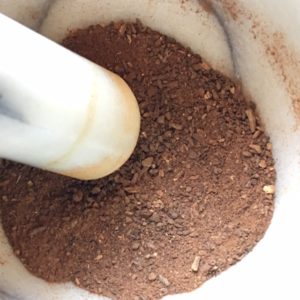
Grind the roots to a gritty powder. This will speed the extraction process when making roasted root tea and allow the tea to be steeped. Otherwise, larger pieces of roots would need to be decocted (simmered on the stove).
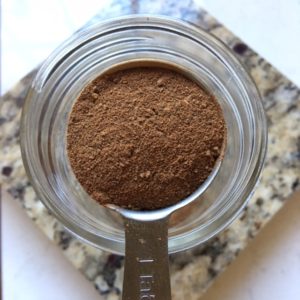
There are many ways and many recipes to make the roasted dandelion root tea. Certainly, this is not the only way to brew up a cup, but it’s a way I do it more often than not. Add one tablespoon of ground roots per cup of boiling water, steeped covered for 10 minutes. This will create a rich, coffee-like beverage. For a less intense tea, try one to two teaspoons per cup.
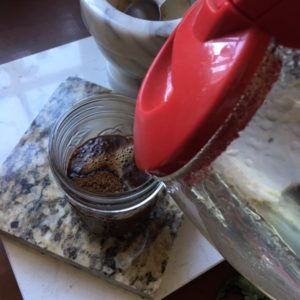
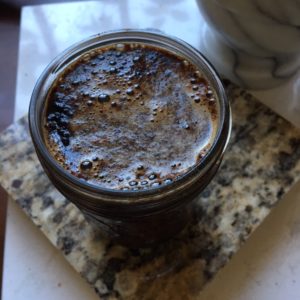
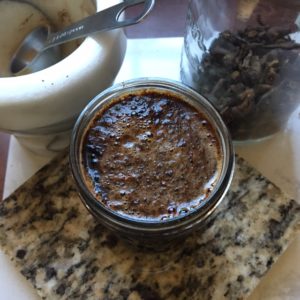
For most of my teas, I do not use a tea bag or a fancy-looking tea strainer. I much prefer my herbs to swim around in the jar. This allows for proper swelling of the herbs and a better extraction process. Metal tea strainers, however cute they might be, are typically too restrictive and yields a milder tea.
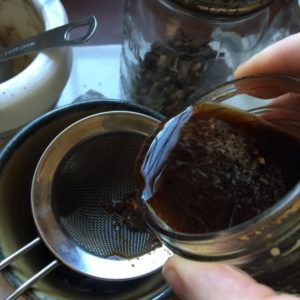
Once the tea has brewed to the desired strength, pour the tea through a fine-mesh sieve to remove the bits of roots.
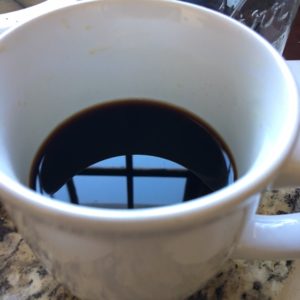
The final brew will be coffee-like color – dark brown to nearly black. There is a residual sweetness that lingers in this tea because the fall roots are full of polysaccharides. It does have a bitter flavor but I find it akin to that of coffee. Some might add dairy (animal or vegetable based) or a sweetener, but I’m very much a purist and drink it black. Try a plain cup for yourself before adding extras just to get a sense of what it tastes like. After, go wild! Consider adding warming spices like nutmeg, cardamom, and cinnamon. You could also turn this into a ‘mocha’ like beverage with the addition of cocoa powder. Have a favorite recipe? I’d love to hear it and try it.
Dr. Nate Petley is a naturopathic doctor and clinical herbalist. He lecturers throughout New England sharing his expertise in naturopathic and botanical medicine. Dr. Petley blends the art and science of herbalism in his clinic and classroom, relying on his 20 years of experience studying, wildcrafting, and making herbal medicine.
Dr. Nate Petley | www.drpetley.com | 2016. All rights reserved. All text and photos are the property of Nathaniel Petley, ND.